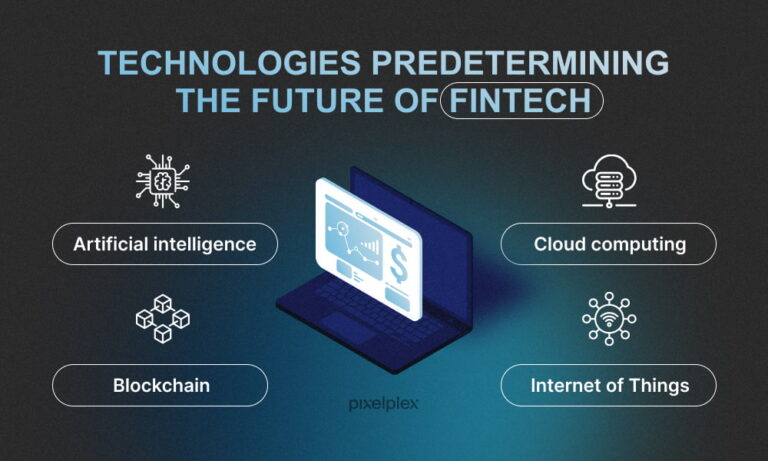MBA in Digital Transformation: Forget dusty textbooks and outdated business models. This program isn’t just about learning the latest tech; it’s about mastering the art of leveraging technology to reshape industries and redefine success. We’ll explore how data analytics, AI, and cutting-edge strategies are transforming businesses across sectors, from healthcare to finance, and even your local corner store.
Get ready to dive into real-world case studies, analyze impactful digital transformations, and discover how you can become a leader in this rapidly evolving landscape.
This deep dive into the MBA in Digital Transformation will cover everything from core curriculum comparisons to emerging technologies like blockchain and IoT. We’ll examine essential digital skills, strategic planning for various industries, and the crucial role of leadership in navigating the complexities of digital change. Ultimately, you’ll understand how to build a thriving career in a world increasingly defined by digital innovation.
Program Overview
An MBA in Digital Transformation is designed to equip professionals with the strategic and operational skills needed to lead businesses through the complexities of the digital age. It blends traditional business acumen with a deep understanding of digital technologies and their impact on various industries. This program isn’t just about learning the latest tech; it’s about applying that knowledge to drive innovation, efficiency, and growth.
Core Curriculum of an MBA in Digital Transformation
A typical MBA in Digital Transformation curriculum covers a range of subjects, combining core MBA principles with specialized digital courses. Expect modules on strategic management, finance, accounting, and marketing, alongside more specialized topics like data analytics, digital marketing, cybersecurity, artificial intelligence, cloud computing, and digital strategy. The program emphasizes practical application through case studies, projects, and potentially even simulations, reflecting real-world challenges and opportunities.
Students learn to leverage digital tools to solve complex business problems and create innovative solutions. The balance between traditional business knowledge and cutting-edge digital skills is a key differentiator.
Comparison with a Traditional MBA Program
While a traditional MBA program focuses broadly on business fundamentals, a Digital Transformation MBA goes further by specializing in the application of digital technologies to business challenges. A traditional MBA might touch upon technology, but it won’t delve as deeply into specific digital tools and strategies. The Digital Transformation MBA provides a more specialized and in-depth understanding of the digital landscape, preparing graduates for roles specifically focused on leveraging technology for competitive advantage.
The traditional MBA offers a wider breadth of business knowledge, while the Digital Transformation MBA provides a focused depth in the digital sphere.
Career Paths and Job Opportunities
Graduates of an MBA in Digital Transformation are highly sought after across various industries. Possible career paths include roles like Chief Digital Officer (CDO), Digital Transformation Manager, Digital Marketing Manager, Data Analyst, Business Intelligence Analyst, Project Manager (focused on digital initiatives), and Consultant specializing in digital strategy. The skills learned are transferable across sectors, from technology and finance to healthcare and retail.
The demand for professionals who can bridge the gap between business strategy and digital execution continues to grow rapidly, making this degree a valuable asset in today’s competitive job market. Many graduates find opportunities in both established organizations seeking digital transformation and in fast-growing tech startups.
Comparison of Three Universities Offering an MBA in Digital Transformation
| University | Tuition Fees (Approximate) | Program Length | Specializations |
|---|---|---|---|
| University A (Example: INSEAD) | $100,000 – $150,000 | 1-2 years | Digital Strategy, Data Analytics, Fintech |
| University B (Example: MIT Sloan) | $120,000 – $180,000 | 1-2 years | Digital Marketing, AI & Machine Learning, Cybersecurity |
| University C (Example: London Business School) | $90,000 – $140,000 | 1 year | Digital Transformation Leadership, E-commerce, Digital Innovation |
Note
Tuition fees and program lengths are approximate and can vary depending on factors such as residency and program options. Specializations are examples and may not represent the complete offering of each university.*
Essential Digital Skills for MBA Graduates

In today’s rapidly evolving business landscape, possessing a robust set of digital skills is no longer a luxury but a necessity for MBA graduates seeking to thrive. This section Artikels five crucial digital skills and explores the critical role of data analytics, artificial intelligence, and digital marketing in achieving business success.
Data Analytics and Business Decision-Making
Data analytics is the bedrock of informed decision-making in the modern business world. The ability to collect, analyze, and interpret large datasets is paramount for identifying trends, predicting future outcomes, and optimizing business strategies. Effective data analysis empowers businesses to understand customer behavior, improve operational efficiency, and make data-driven decisions that lead to increased profitability and competitive advantage.
For example, a retail company can use data analytics to predict seasonal demand, optimize inventory levels, and personalize marketing campaigns, ultimately boosting sales and reducing waste. This involves leveraging tools and techniques such as descriptive, diagnostic, predictive, and prescriptive analytics. The application of these techniques allows businesses to move beyond simple reporting and delve into the ‘why’ behind the data, enabling proactive rather than reactive decision-making.
The Role of Artificial Intelligence and Machine Learning in Business Transformation
Artificial intelligence (AI) and machine learning (ML) are transforming businesses across all sectors. AI encompasses the broader concept of machines mimicking human intelligence, while ML focuses on algorithms that enable systems to learn from data without explicit programming. In business, AI and ML are used for automation, predictive modeling, personalized customer experiences, and fraud detection. For instance, AI-powered chatbots can handle customer inquiries 24/7, freeing up human agents to focus on more complex issues.
Machine learning algorithms can analyze vast amounts of customer data to identify patterns and predict future behavior, allowing businesses to personalize marketing campaigns and product recommendations. This leads to improved customer satisfaction and increased sales. The application of AI and ML requires a strong understanding of the underlying algorithms and their limitations, as well as ethical considerations related to data privacy and bias.
Digital Marketing Strategies
Effective digital marketing is crucial for reaching target audiences in today’s interconnected world. This involves utilizing various online channels, such as search engine optimization (), social media marketing, email marketing, and pay-per-click (PPC) advertising, to build brand awareness, generate leads, and drive sales. A successful digital marketing strategy requires a deep understanding of customer behavior, the ability to create engaging content, and the skills to analyze campaign performance and make data-driven optimizations.
For example, a company launching a new product might use to improve its website’s ranking in search engine results, social media to build excitement and engage with potential customers, and email marketing to nurture leads and drive conversions. A/B testing different ad creatives and landing pages is also critical to optimize campaign performance and maximize ROI.
Cloud Computing and Data Storage
Cloud computing has revolutionized how businesses store, access, and manage data. The ability to leverage cloud-based services offers significant advantages in terms of scalability, cost-effectiveness, and data security. Understanding different cloud models (IaaS, PaaS, SaaS) and their applications is crucial for making informed decisions about data storage and management. For example, a company can use cloud storage to securely store large datasets, use cloud-based applications to improve collaboration among employees, and leverage cloud computing resources to scale their operations up or down as needed, reducing IT infrastructure costs.
This also allows for increased flexibility and responsiveness to changing business needs.
Cybersecurity and Data Privacy
In an increasingly digital world, cybersecurity and data privacy are paramount. MBA graduates need a strong understanding of cybersecurity threats and best practices to protect sensitive data and maintain business continuity. This includes implementing robust security protocols, managing risk effectively, and complying with relevant data privacy regulations (such as GDPR). For example, implementing multi-factor authentication, regularly updating software, and conducting security audits are essential steps to mitigate cybersecurity risks.
Understanding data privacy regulations and implementing data protection measures are crucial for maintaining customer trust and avoiding legal penalties.
Digital Transformation Strategies in Various Industries
Digital transformation isn’t a one-size-fits-all solution; its successful implementation hinges on understanding the unique challenges and opportunities within specific industries. Different sectors require tailored strategies reflecting their operational models, regulatory landscapes, and customer expectations. This section explores digital transformation strategies across various sectors, highlighting key successes and challenges.
Digital Transformation Strategies in Healthcare and Financial Services
Healthcare and financial services, while vastly different, both face significant pressures to leverage digital technologies for improved efficiency, enhanced customer experience, and enhanced security. In healthcare, digital transformation focuses on areas like telehealth, electronic health records (EHRs), and AI-powered diagnostics. Financial services, on the other hand, prioritize areas such as mobile banking, fintech integration, and robust cybersecurity measures.
While both industries aim for improved customer experience and operational efficiency, healthcare’s digital transformation is heavily regulated, requiring stringent data privacy and security protocols. Financial services also face intense regulatory scrutiny, but the focus often shifts towards preventing fraud and maintaining customer trust in a rapidly evolving digital landscape. The key difference lies in the nature of the data handled and the level of regulatory oversight.
Healthcare data is highly sensitive and subject to strict compliance regulations (HIPAA in the US, for example), while financial data is subject to regulations aimed at protecting financial stability and preventing fraud (like GDPR in Europe).
Case Studies of Successful Digital Transformations
Successful digital transformations require a holistic approach, encompassing strategic planning, technological implementation, and cultural change. The following case studies illustrate this.
- Netflix: Netflix’s shift from DVD rentals to a streaming service is a prime example of successful digital transformation. Key success factors included a strong focus on customer experience, a data-driven approach to content creation, and a willingness to embrace new technologies. Challenges included managing massive data volumes and maintaining high-quality streaming performance globally. Netflix’s data-driven approach allowed them to personalize recommendations and understand viewing habits, which led to increased user engagement and subscription growth.
However, the transition required significant investments in infrastructure and content licensing.
- Walmart: Walmart’s successful digital transformation focused on improving its online presence and integrating its online and offline operations. Key success factors included investing heavily in e-commerce infrastructure, integrating its supply chain with its online platform, and providing convenient options like online grocery pickup. Challenges included competing with established e-commerce giants like Amazon and adapting its store layouts and operations to support online orders.
Walmart’s strategic investment in technology and logistics helped them compete effectively in the online retail market, demonstrating the power of integrating physical and digital channels.
Digital Transformation Strategy for an SME in the Retail Sector, MBA in digital transformation
A hypothetical SME retail business, “GreenThumb Garden Supplies,” could benefit from a multi-pronged digital transformation strategy. This would involve:
- Enhanced E-commerce Presence: Developing a user-friendly website with online ordering capabilities, integrated payment gateways, and secure inventory management.
- Customer Relationship Management (CRM): Implementing a CRM system to track customer interactions, personalize marketing efforts, and build loyalty programs.
- Social Media Marketing: Leveraging social media platforms to engage with customers, promote products, and build brand awareness. This might involve running targeted advertising campaigns on platforms like Facebook and Instagram.
- Data Analytics: Utilizing data analytics tools to track sales trends, understand customer behavior, and optimize inventory management. This could help identify peak selling seasons and predict future demand.
- Inventory Management System: Implementing an inventory management system to track stock levels, minimize waste, and ensure timely replenishment of popular items. This would improve efficiency and reduce costs associated with overstocking or stockouts.
Leadership and Change Management in Digital Transformation

Digital transformation isn’t just about technology; it’s fundamentally about people and how they adapt to new ways of working. Successful transformation hinges on strong leadership that can navigate the complexities of change, inspire buy-in, and manage the inevitable challenges. This section explores the critical role of leadership and effective change management strategies in achieving successful digital transformation initiatives.
The Role of Leadership in Driving Digital Transformation
Effective leadership is the cornerstone of successful digital transformation. Leaders must champion the change, clearly articulate the vision, and actively communicate the benefits throughout the organization. This involves more than just allocating resources; it requires fostering a culture of innovation, experimentation, and continuous learning. Leaders need to be proactive in identifying and addressing resistance to change, providing support and training to employees, and celebrating successes along the way.
Without strong, visible leadership, even the most well-planned digital transformation initiatives are likely to falter. For example, Satya Nadella’s leadership at Microsoft, marked by a shift in company culture and a focus on cloud computing, exemplifies how effective leadership can drive substantial digital transformation.
Challenges of Managing Change During Digital Transformation
Digital transformation often disrupts established workflows, processes, and even organizational structures. This can lead to resistance from employees who are comfortable with the status quo. Other challenges include a lack of clear communication, insufficient training, inadequate resources, and a failure to address employee concerns and anxieties. Furthermore, managing the technological aspects of the transformation, such as data migration and system integration, presents its own set of complexities.
Successfully navigating these challenges requires careful planning, open communication, and a commitment to employee well-being. For instance, a company undergoing a CRM implementation might encounter resistance from sales teams accustomed to their existing system, requiring proactive training and support to ensure a smooth transition.
Effective Change Management Strategies in Digital Transformation
Successful change management in digital transformation requires a multi-faceted approach. This includes clearly defining the vision and goals of the transformation, actively engaging employees throughout the process, providing comprehensive training and support, and establishing clear communication channels. Using agile methodologies, breaking down the transformation into smaller, manageable phases, and celebrating milestones along the way can help maintain momentum and build confidence.
Moreover, recognizing and rewarding early adopters can encourage others to embrace the change. Companies like Netflix, known for their iterative approach to development and change, provide a compelling case study in effective change management within a digitally driven environment.
A Step-by-Step Guide for Implementing a Digital Transformation Project
Implementing a digital transformation project effectively requires a structured approach. A step-by-step guide could involve:
- Assessment and Planning: Conduct a thorough assessment of the current state of the organization, identify areas for improvement, and define clear goals and objectives for the transformation.
- Vision and Strategy Development: Articulate a compelling vision for the transformation and develop a comprehensive strategy that Artikels the key initiatives, timelines, and resources required.
- Stakeholder Engagement: Engage with key stakeholders across the organization to build consensus, address concerns, and secure buy-in for the transformation.
- Pilot Projects and Iterative Implementation: Begin with pilot projects to test and refine the approach before scaling the transformation across the organization.
- Communication and Training: Establish clear communication channels to keep employees informed throughout the process and provide comprehensive training to equip them with the necessary skills and knowledge.
- Monitoring and Evaluation: Continuously monitor progress, measure key performance indicators, and make adjustments as needed to ensure the transformation stays on track.
- Continuous Improvement: Embrace a culture of continuous improvement and learning, adapting to new technologies and best practices as they emerge.
The Future of Digital Transformation and its Impact on Business
Digital transformation is no longer a futuristic concept; it’s the present and the future of how businesses operate and compete. The pace of technological advancement is accelerating, fundamentally reshaping business models, customer expectations, and the very fabric of the global economy. Understanding this evolving landscape and its implications is crucial for future business leaders.The convergence of several powerful technologies will significantly impact businesses in the coming years.
This necessitates a proactive approach to leveraging these advancements while mitigating potential risks.
Emerging Technologies and Future Business Models
The integration of emerging technologies like blockchain, the Internet of Things (IoT), and artificial intelligence (AI) is poised to revolutionize various industries. Blockchain technology, with its decentralized and secure nature, offers the potential to streamline supply chains, enhance transparency, and create new trust-based business models. Imagine a pharmaceutical company using blockchain to track drugs from manufacturing to the patient, ensuring authenticity and preventing counterfeiting.
The IoT, connecting billions of devices, generates massive amounts of data that, when analyzed using AI, can provide invaluable insights for predictive maintenance, personalized customer experiences, and optimized operational efficiency. For example, a smart city could leverage IoT sensors and AI to optimize traffic flow, reduce energy consumption, and improve public safety. These examples showcase the transformative potential of these technologies in creating innovative and efficient business models.
Ethical Considerations and Data Privacy
The rapid adoption of digital technologies brings significant ethical considerations to the forefront, particularly concerning data privacy and security. The vast amounts of data collected through digital channels raise concerns about potential misuse, surveillance, and algorithmic bias. Robust data governance frameworks, ethical guidelines for AI development, and transparent data handling practices are essential to build trust and ensure responsible innovation.
Regulations like GDPR in Europe highlight the growing importance of data privacy and the need for businesses to prioritize ethical data management. Failure to address these concerns can lead to reputational damage, legal repercussions, and a loss of customer trust.
Globalization and the Digital Age: Challenges and Opportunities
Globalization in the digital age presents both significant opportunities and challenges. The internet has interconnected businesses and consumers globally, creating new markets and opportunities for expansion. However, this interconnectedness also exposes businesses to increased competition, cybersecurity threats, and regulatory complexities across different jurisdictions. Successfully navigating this landscape requires a global perspective, a deep understanding of diverse cultural contexts, and the ability to adapt strategies to varying regulatory environments.
Companies that can effectively leverage global talent pools, adapt to diverse consumer preferences, and navigate complex geopolitical landscapes will be best positioned for success.
Skills and Competencies for Future Digital Leaders
Future leaders in a digitally driven world require a unique blend of technical and soft skills. While technical proficiency in areas like data analytics, cybersecurity, and AI is crucial, equally important are leadership qualities such as adaptability, strategic thinking, ethical decision-making, and the ability to foster a culture of innovation. These leaders must be comfortable with ambiguity, able to navigate rapid technological change, and possess the emotional intelligence to manage diverse teams and stakeholders in a globally interconnected environment.
Furthermore, the ability to learn continuously and adapt to emerging technologies is no longer a desirable skill but a necessity. Continuous learning and development programs should be prioritized to ensure that future leaders remain at the forefront of the ever-evolving digital landscape.
Illustrative Examples of Digital Transformation Initiatives
Digital transformation isn’t just a buzzword; it’s a fundamental shift in how businesses operate. Successfully navigating this change requires strategic planning, technological expertise, and a deep understanding of the customer. The following examples illustrate how different companies have leveraged digital technologies to achieve significant business improvements.
Successful Digital Transformation Project: Revamping a Retail Giant’s Supply Chain
This case study focuses on “RetailCo,” a large national retailer facing challenges with inventory management and delivery times. Their existing supply chain was inefficient, leading to stockouts, excess inventory, and high shipping costs. The project, launched in 2021, aimed to modernize their supply chain using AI-powered predictive analytics, blockchain technology for enhanced transparency, and automated warehouse systems. The project scope included upgrading their warehouse management system (WMS), integrating data from various sources (POS, suppliers, logistics providers), and training employees on new technologies.
The timeline was 18 months, with a budget of $50 million. Key outcomes included a 20% reduction in inventory costs, a 15% improvement in on-time delivery, and a 10% decrease in shipping costs. The success was largely attributed to strong leadership, effective change management, and a phased implementation approach that minimized disruption to daily operations.
Improving Customer Experience Through Personalized Marketing
“FashionForward,” an online clothing retailer, implemented a personalized marketing strategy using customer data analytics. They collected data on customer browsing history, purchase behavior, and social media interactions. Using machine learning algorithms, they segmented their customer base into distinct groups with similar preferences. This allowed them to create targeted marketing campaigns, offering personalized product recommendations and discounts. The result was a 25% increase in customer engagement, a 15% rise in conversion rates, and a significant improvement in customer satisfaction scores, as measured by online reviews and surveys.
This illustrates how data-driven personalization can significantly enhance customer experience and loyalty.
Leveraging Data Analytics for Market Opportunity Identification
“InnovateTech,” a software company, used data analytics to identify a new market opportunity in the healthcare sector. They analyzed publicly available data on healthcare trends, patient demographics, and physician behavior. They also utilized internal data on their existing software products and customer usage patterns. By employing statistical modeling and predictive analytics, they identified a high demand for specialized software to manage patient data and streamline administrative processes.
This led to the development of a new product specifically tailored to this market segment, resulting in a 30% increase in revenue within two years of launch. This example demonstrates how data analytics can uncover hidden market opportunities and drive product innovation.
Closure

In short, an MBA in Digital Transformation isn’t just another business degree; it’s your passport to a future where digital fluency is paramount. By understanding the strategic application of technology, mastering essential digital skills, and developing strong leadership capabilities, graduates are poised to navigate the ever-changing business environment and drive meaningful transformation. The opportunities are vast, the challenges exciting, and the rewards substantial.
Are you ready to lead the charge?
Question Bank: MBA In Digital Transformation
What’s the difference between a traditional MBA and an MBA in Digital Transformation?
A traditional MBA focuses on core business principles. An MBA in Digital Transformation integrates those principles with a deep dive into digital technologies and their strategic application in business.
How long does an MBA in Digital Transformation typically take to complete?
Program lengths vary, but many are completed within 1-2 years, depending on the university and study format.
Are there online options for an MBA in Digital Transformation?
Yes, many universities offer online or hybrid (blended learning) options for this degree.
What kind of salary can I expect after graduating?
Salaries vary widely based on experience, location, and specialization, but graduates often command higher salaries due to the high demand for their skills.
What are the admission requirements for an MBA in Digital Transformation program?
Requirements vary by university, but generally include a bachelor’s degree, GMAT or GRE scores, and professional experience. Some programs may also require specific technology-related coursework or certifications.





